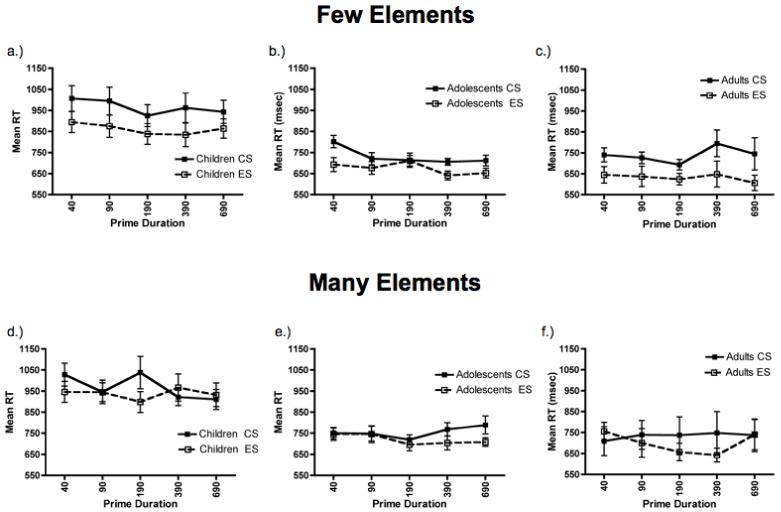Figure 5.

Reaction time results for Few (a-c) and Many (d-f) task, plotted as mean percent error ± 1 SEM separately for children (a, d), adolescents (b, e), and adults (c, f). In the Few task, all three age groups were faster to identify the local elements (ES) compared to the global configuration (CS) in the few-element displays. In the Many task, adults showed an early advantage for the global configuration (CS) compared to the elemental information (ES) at the 40 ms prime duration. Neither children nor adolescents demonstrated this advantage. In fact, both developmental groups showed an element advantage, which occurred at the early prime durations for the children and at the later prime durations for the adolescents.
